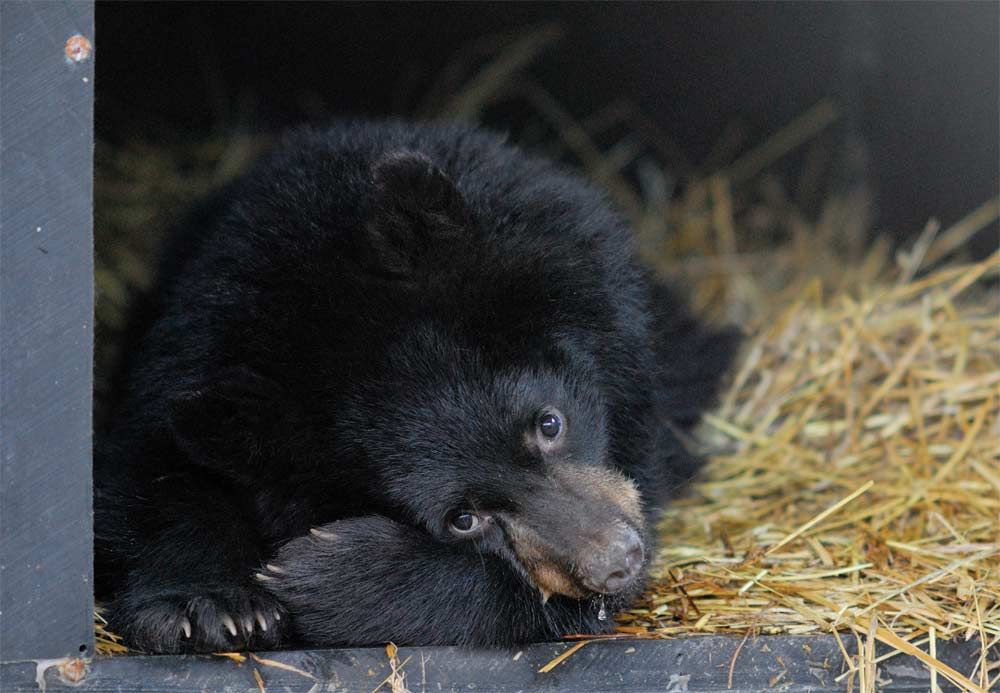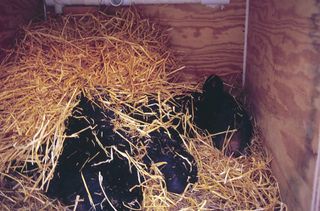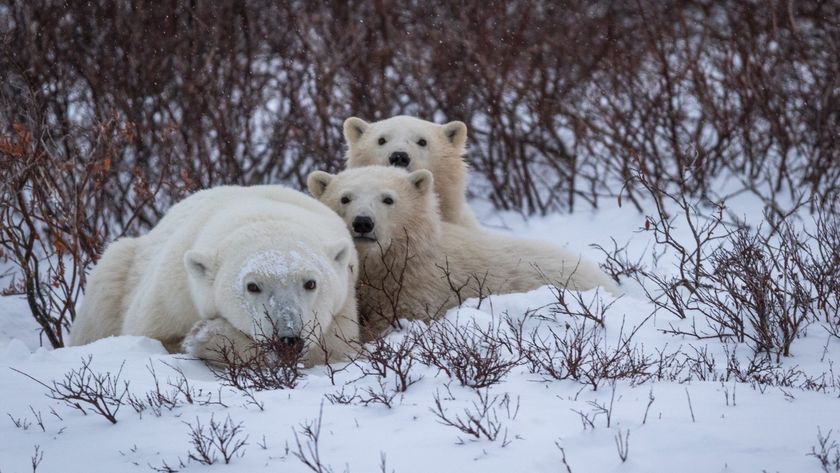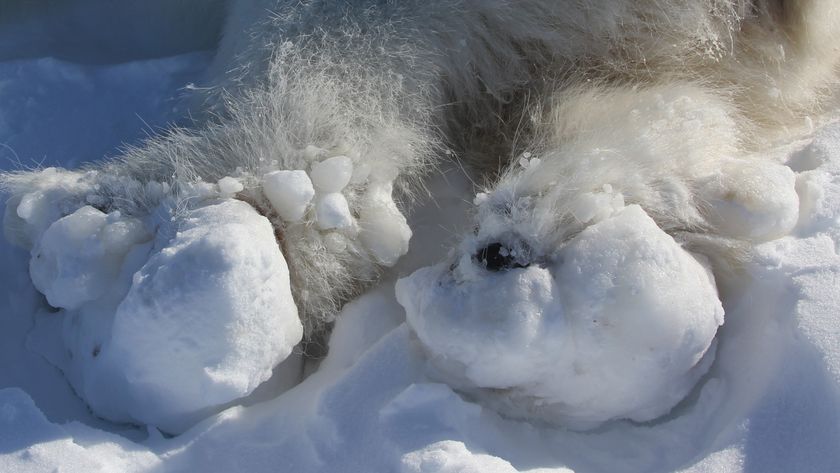5 Hibernating Bears Let Scientists Peek Into Their Dens

There's more going on with hibernating bears than a few months of beauty sleep, according to a new, first-of-its-kind study that monitored five wild black bears as they slumbered away an Alaska winter.
Unlike other hibernating animals, the study found, black bears drop their body temperature by only a few degrees, while simultaneously managing to suppress their metabolism by 75 percent (to slow down the body's energy needs).
It's the first time researchers have studied a full hibernation season in a human-sized animal, and researchers hope the results could eventually help induce human hibernation for medical care or even space travel – though such advances are likely a long way off.
"A real desire in medicine is to be able to induce hypothermia in patients, to lower their temperature and metabolism," study researcher H. Craig Heller, a biologist at Stanford University, told LiveScience. "If you can lower the temperature of the brain just a couple of degrees after a stroke, you can dramatically decrease the amount of damage from the stroke … but right now it's impossible to do that effectively. If indeed we could figure out how the bear does this biochemically and physiologically, it might lead to an application in humans."
Building a den
Bears have long been of interest to medical researchers because of their amazing hibernation abilities. For example, black bears lose fat during their immobile months in hibernation, but unlike bedridden humans, they lose little muscle or bone mass. That makes them interesting to rehabilitation researchers, study author Brian Barnes of the University of Alaska, Fairbanks, said in a media briefing about the work Feb. 17 in Washington, DC.
Monitoring the sleep habits of a 200-pound black bear isn't easy. It's difficult to get captive animals to hibernate as they would in the wild, so most previous research on hibernating bears has involved intermittent field monitoring of the wild animals. The new study took a different approach. Five "nuisance" black bears that repeatedly came too close to human communities in Alaska were tranquilized and transported to a remote area outside of Fairbanks. Two of the troublesome bears were female, and the other three were male. The largest of the bunch weighed in at 227 pounds (103 kilograms).
Sign up for the Live Science daily newsletter now
Get the world’s most fascinating discoveries delivered straight to your inbox.
Each bear was provided a cozy wooden box as a den, complete with straw bedding and an array of high-tech sensors to measure the animals' oxygen consumption, muscle movement, heart rate and temperature.
The researchers recorded every twitch the bears made during the five-month hibernation season from November through March. The bears were also surgically implanted with a radio transmitter, a heart-rate monitor and a metabolism monitor, allowing the research team to track their vitals for a month post-hibernation.

Chilled critters
The bears settled in happily to their human-provided dens, Heller said. Once asleep, their body temperature dropped from a normal 98.6 to 100.4 degrees Fahrenheit (37 to 38 degrees Celsius) to an average of 91.4 degrees F (33 degrees C). This temperature drop was coupled with a 75 percent reduction in the bears' metabolic rate. That was surprising, Heller said: In small hibernating mammals such as marmots and squirrels, it takes a 10-degree Celsius drop in body temperature to slow the metabolism by half. The bears were getting their metabolism down 75 percent with half that temperature drop.
"This drop in metabolism in the bear is so much greater than what you would expect," Heller said.
The bears showed a regular two- to seven-day pattern in which their temperature would drop between 2 and 6 degrees C and then they would shiver to bring it back up again, the researchers found. The lowest recorded body temperature for the study subjects was 86.7 degrees F (30.4 degrees C).
That's much warmer than small hibernators, Heller said, whose body temperature can get down nearly to freezing, though the neuron networks in their brains shrink as a result and have to be rebuilt during occasional wake-ups. Bears may be able to avoid that damage, Heller said.
"One explanation is that the bears don't have to [drop their temperature as much as small mammals], because they are able to store so much energy as fat, being big and having a low surface-to-volume ratio," Heller said. (The more surface area exposed to the elements, the more heat that gets released and so the harder a body has to work to keep a healthy temperature.)
As further confirmation that something besides temperature regulates bear metabolism, the researchers found that after hibernation, when body temperature was normal, metabolism stayed at about half its usual rate. It was two to three weeks after the bears woke up before metabolism hit normal levels.
Remarkable regulation
The most memorable moment of the study, Heller said, was when the researchers' video cameras caught one of the female bears giving birth. Bears give birth in February, during hibernation, and the offspring nurse and grow until the momma bear wakes up. Unfortunately, the baby bear born during the study died of a congenital defect. But researchers were able to observe that the mother didn't lower her body temperature at all until after the birth, suggesting that warmth is important for baby bear development.
Because of their "nuisance" status, the bears were euthanized after the study. The scientists took tissue samples from the bears for future research into the animals' body chemistry.
The researchers have no firm plans to repeat the study with more bears, but the University of Alaska's Barnes told reporters it would be interesting to monitor the hibernation of black bear's bigger cousin, the grizzly or brown bear.
"It's tempting to speculate that as you move up in mass, these animals have lower rates of heat loss … that they might be able to hibernate at even lower temperatures," Barnes said, adding that grizzly's size might prove a challenge: "We'll need a bigger box."
You can follow LiveScience Senior Writer Stephanie Pappas on Twitter @sipappas.

Stephanie Pappas is a contributing writer for Live Science, covering topics ranging from geoscience to archaeology to the human brain and behavior. She was previously a senior writer for Live Science but is now a freelancer based in Denver, Colorado, and regularly contributes to Scientific American and The Monitor, the monthly magazine of the American Psychological Association. Stephanie received a bachelor's degree in psychology from the University of South Carolina and a graduate certificate in science communication from the University of California, Santa Cruz.











